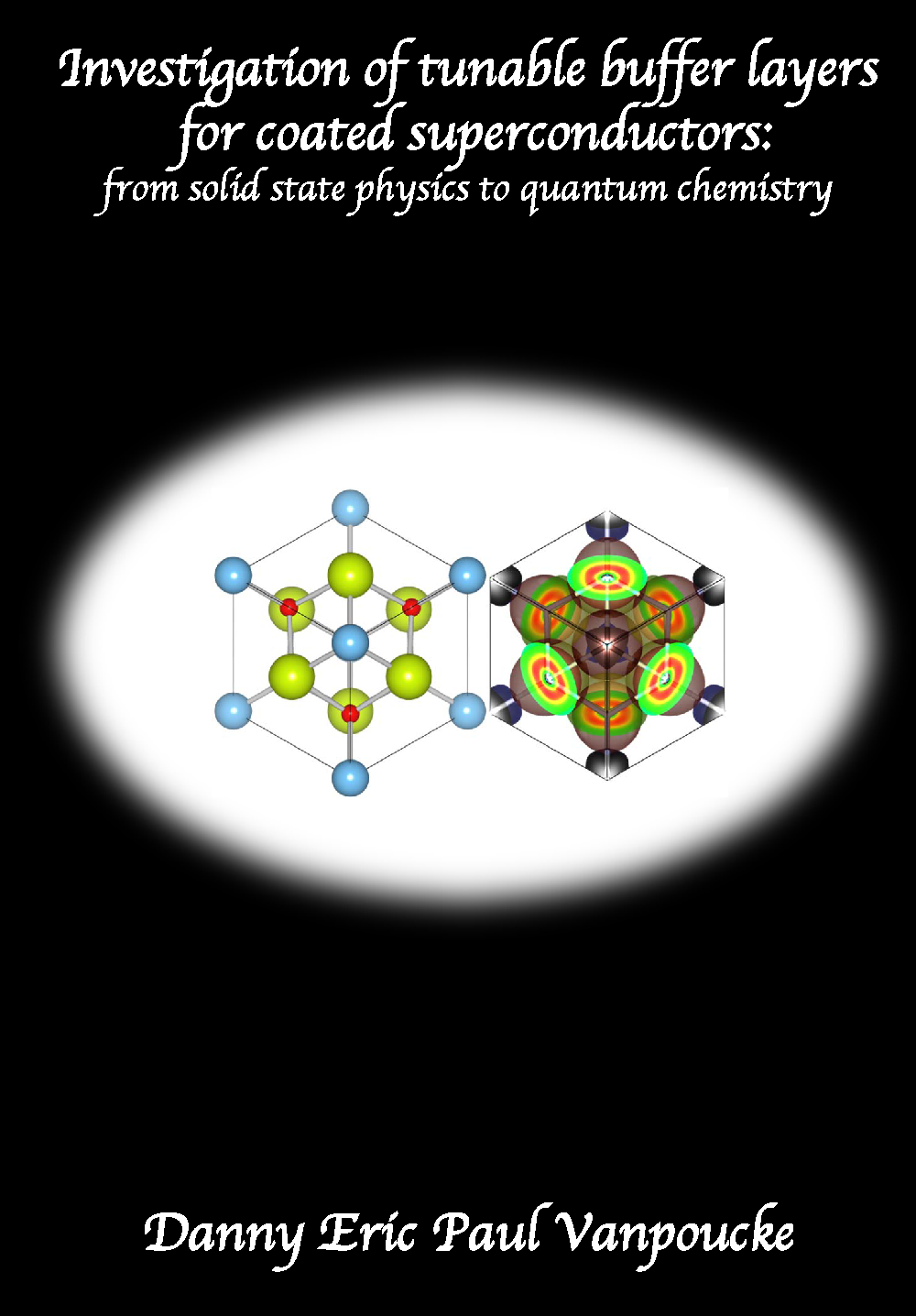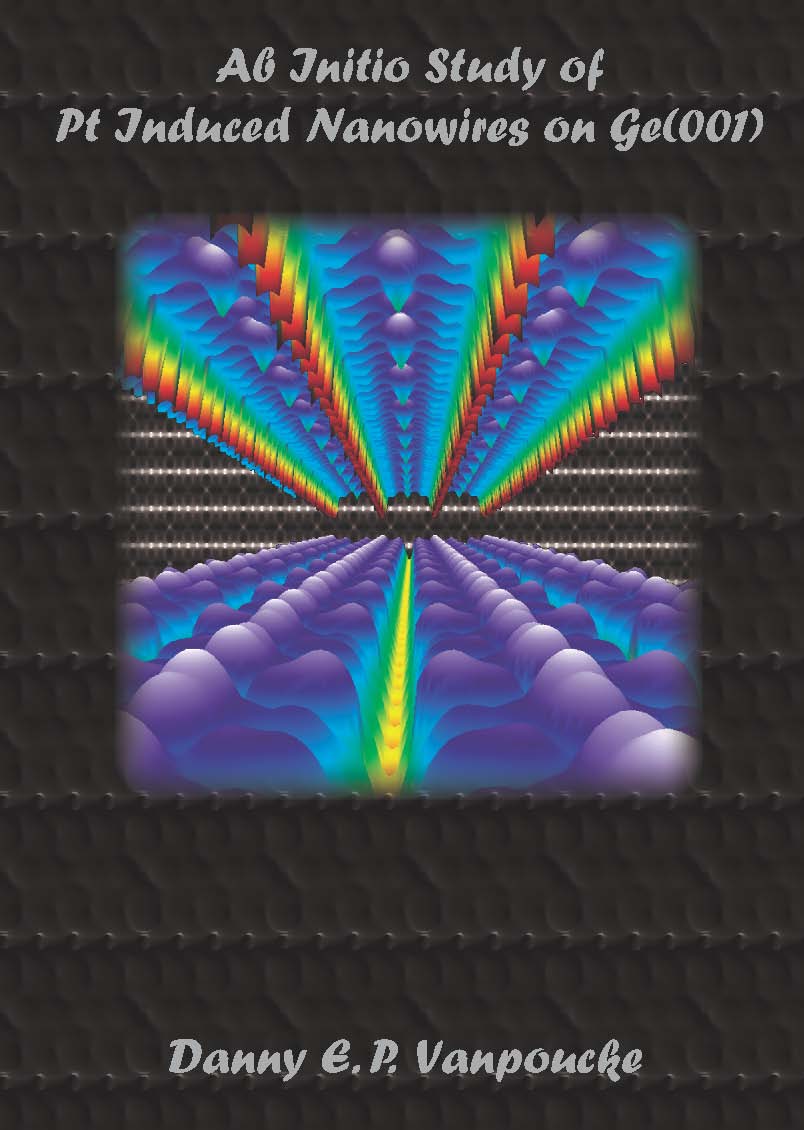| Authors: | Danny E.P. Vanpoucke |
| Ph.D. Thesis | at Ghent University, Belgium |
| date: | October 5th, 2012 |
| Promoters | Prof. Dr. Isabel Van Driessche and Prof. Dr. Patrick Bultinck |
| #pages | 218 |
| export: | bibtex |
| pdf: | <PhD.Thesis> |
| research page with more information |
Abstract
High temperature ceramic superconductors can be grown in layered structures on metallic wires to provide the mechanical flexibility required for industrial applications. To prevent the metal atoms of diffusing into the superconductor—destroying its superconductivity—buffer layers are grown between the metal substrate and the superconductor. Recently, cerium oxide has been used as such a buffer layer. However, the layer thickness of these buffer layers is limited by the formation of cracks during deposition. This behaviour has been linked to internal stress due to lattice mismatch and different thermal expansion coefficients of the substrate and the buffer layer. A simple way to reduce these mismatches is through metal doping.
In this work, we study the influence of dopants on the properties of cerium oxide through the use of ab initio calculations. Trends in the stability, lattice parameter, bulk modulus and thermal expansion coefficient of cerium oxide doped with different dopants are investigated. In addition, the influence of charge compensating oxygen vacancies is studied, and their role in the stability of heavily La-doped cerium oxide (La2Ce2O7) is presented. The use of dopants with different valences also leads to a modification of the charge distribution around the dopant sites. A way to have a more quantitative estimate of the charge transfer induced by dopants is via the introduction of the chemical concept of ‘atoms in a molecule’ into solids. This can be considered a first step in the direction of answering the experimental question: What is the charge of a given atom in a certain compound? In this work we present an implementation of this Hirshfeld method for solids, and calculate the atomic charges in doped cerium oxides.



